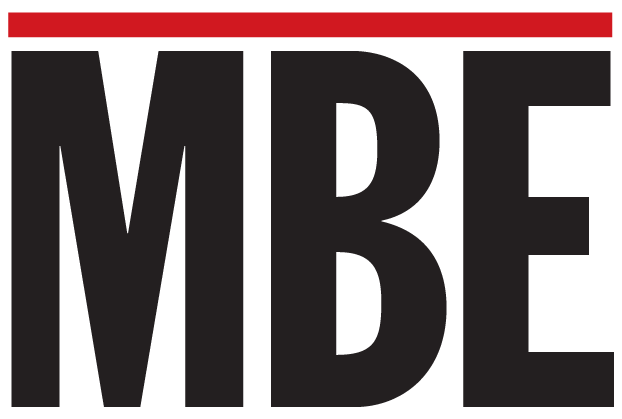
Streamline Your Small Business Operations in 2025
The start of a new year is the perfect time for small business owners to rethink their workflows and adopt tools that save time, reduce stress, and boost productivity. According to recent statistics, 71% of small businesses adopted digital tools to future-proof their operations in 2024. This trend is expected to continue, with a focus on AI, automation, and cloud-based solutions, as 80% of businesses plan to adopt automation tools by 2025.
Running a small business is no small feat. Between managing daily operations, staying ahead of competitors, and ensuring steady growth, efficiency is crucial. The right tools can transform how you operate, saving time, reducing costs, and boosting productivity. Here’s a roundup of the top five tools to help you streamline your business operations and set yourself up for a successful 2025.
1. Project and Task Management Tools
Time is money, and juggling multiple projects can feel overwhelming without a reliable system. Task management tools like Trello and Asana simplify the process by giving you a clear visual representation of your workload. These platforms let you organize tasks, assign them to team members, and track progress in real-time. They ensure everyone stays aligned and deadlines are met, even in fast-paced environments.
Cloud-based tools like Asana, ClickUp, or Trello eliminate manual processes and reduce human error. These tools are essential for streamlining day-to-day tasks and improving efficiency.
Incorporating them into your business is easy.
- Start by mapping out your team’s typical workflows. Identify repetitive tasks and communication gaps.
- Use a project management tool to create boards for ongoing projects, assign tasks, and set due dates.
- Incorporate daily or weekly check-ins within the platform to track progress.
Look for the following features when choosing a project management tool:
- Visual task boards and timelines.
- Customizable workflows for different projects.
- Deadlines, reminders, and integrations with tools like Slack and Google Calendar.
Pro Tip: Use labels and priority tags to identify urgent tasks quickly.
2. Accounting and Financial Management Tools
Managing your business’s finances doesn’t have to be a headache. And, accurate financial tracking is vital for any business. Tools such as QuickBooks and Wave are designed to simplify everything from invoicing to expense tracking, making it easier to manage cash flow and ensuring tax season is much less stressful. With features like automatic bank reconciliation and detailed financial reports, these tools let you focus on growing your business instead of poring over spreadsheets.
Setting up these tools in your business can be relatively simple.
- Begin by inputting all income and expense categories to track financial activity.
- Use automation features to schedule recurring invoices and track overdue payments.
- Generate financial reports monthly to monitor trends and make data-driven decisions.
Pro Tip: Set up recurring invoices for clients to save time on monthly billing.
3. Communication and Collaboration Tools
Efficient communication is essential, especially with the rise of remote and hybrid work. Tools in this category streamline team collaboration, whether you’re working remotely or in person, and reduce the need for lengthy email threads.
Slack and Microsoft Teams are two of the best tools for keeping your team connected, organized, and aligned. With features like channels for specific topics, file sharing, and integration with productivity apps, these platforms reduce email overload and improve collaboration.
To ensure efficient business communication:
- Set up group chats and channels for different departments or projects.
- Use video conferencing features for regular meetings to ensure clarity and alignment.
- Share files and updates within the tool to keep everyone informed.
Pro Tip: Create a “Daily Stand-Up” channel for team members to share updates and priorities each morning.
4. Marketing Automation Tools
Over 50% of small businesses leveraged email marketing tools in 2024. Marketing automation tools like HubSpot and Mailchimp can help you grow your customer base without stretching your resources thin. From email campaigns to social media scheduling, these platforms simplify repetitive tasks so you can focus on strategy and engagement.
These tools are easy to incorporate into your business operations.
- Set up email campaigns to nurture leads and keep customers engaged.
- Use analytics dashboards to track campaign performance and identify areas for improvement.
- Schedule social media posts in advance to maintain a consistent online presence.
Pro Tip: Set up abandoned cart email campaigns to recover lost sales.
5. Cloud Storage and File Management Tools
Gone are the days of cluttered desktops and misplaced files. With teams becoming increasingly mobile, having a secure and accessible way to store and share files is essential. Tools like Google Workspace and Dropbox provide cloud-based solutions for storing, sharing, and collaborating on documents. With these tools, you can access your files from anywhere and ensure your team is always working with the latest version.
These tools ensure data is organized, backed up, and available when needed.
Here are some ways you can use them in your business.
- Store all essential business documents in organized folders within the cloud platform.
- Share files with specific team members and set access permissions for security.
- Use synchronization features to ensure files are updated across all devices in real-time.
Pro Tip: Use folder templates for recurring projects to save time on organization.
Making the Most of Your Tools
To ensure these tools are effectively integrated into your business:
- Start Small: Test one tool at a time and ensure it meets your business needs before expanding.
- Train Your Team: Provide clear guidance on how to use the tools to maximize adoption and efficiency.
- Review Regularly: Evaluate the tools’ impact on productivity and make adjustments as needed.
The right tools can make all the difference in streamlining operations and driving growth in 2025. By focusing on project management, financial tracking, communication, marketing, and cloud storage, you can build a tech stack tailored to your business needs. Start small, stay consistent, and watch your efficiency soar.












